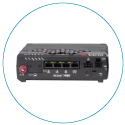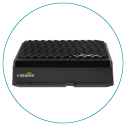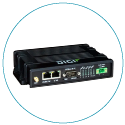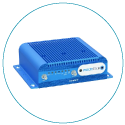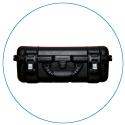Types of Antennas
Wireless devices, like two-way radios and Bluetooth devices, rely on antennas to establish communication via radio frequencies (RF). To ensure that a device will function properly, choosing the correct antenna is a crucial part of the engineering and design phase. With a variety of antenna types available, understanding the differences between various antenna types will help to ensure you're selecting the correct type for your embedded systems.
Before diving into external versus PCD antennas, it's important to note that two subsets of antenna types - monopole and dipole - apply to both categories.
Monopole:
Dipole:
External Antennas
Omnidirectional
Omnidirectional antennas radiate radio power equally in all directions, providing 360-degree coverage, and can be designed as either monopole or dipole. They're generally used in applications where signals need to be distributed in all directions, such as wireless routers or access points in locations where signal sources are plentiful.
Directional
PCB Antennas
A PCB antenna is an antenna that's integrated directly into a printed circuit board (PCB). Instead of being a separate component attached to the PCB, the antenna structure is designed and fabricated as part of the PCB itself. PCB antennas are typically used in various wireless communication applications, including IoT devices, wireless routers, Bluetooth modules, and other devices that need wireless connectivity. They provide a compact, integrated solution for transmitting and receiving RF signals without requiring a separate antenna.
Incorporating the antenna directly on the PCB eliminates the need for additional external components, saving both space and cost in the overall design. Meanwhile, the antenna design involves careful consideration of factors such as frequency range, radiation pattern, and size limitations. The dimensions and shape of the antenna trace on the PCB are carefully calculated to achieve the desired electrical performance.
Slot:
Patch:
Planar Inverted F Antennas (PIFA):
External Antennas v. PCB Antennas: Benefits and Disadvantages
External Antennas
Benefits of External Antennas
External antennas provide better range, sensitivity, and directional behavior due to their larger size. This increased size also allows for higher gain, which improves signal reception and transmission. Their external nature allows them to offer flexibility in placement and positioning, allowing for optimal signal coverage and performance.
External antennas are generally "ground plane independent," meaning they can be used in various environments without requiring extensive design modification, and they're typically easier to replace or upgrade without modifying the device's internal structure, which provides scalability and future-proofing options.
Challenges of External Antennas
Since external antennas must be attached to the device, they may require additional manufacturing techniques and materials, leading to higher costs than PCB antennas. They also occupy physical space on or near the device, which can affect the aesthetics of the device. This is particularly important for consumer electronics, where design and appearance play a significant role.
Finally, external antennas are more exposed to physical damage and may require additional protection to ensure durability.
PCB Antennas
Benefits of PCB Antennas
PCB antennas offer high integration and a compact form factor, and since they can be designed directly onto the PCB, they eliminate the need for external components. Additionally, they're ideal for space-limited applications, such as handheld devices, wearables, and smart home products.
When properly designed and implemented, PCBs provide reliable wireless connectivity and can be customized and designed to meet specific frequency band and performance requirements.
Challenges of PCB Antennas
Which Type of Antenna Is Right For My Use Case?
Choosing between PCB and external antennas depends on specific requirements, design constraints, and cost considerations. To achieve the most reliable connectivity, the application, desired performance, and available space should all be carefully considered.
Overall, external antennas are a popular choice for applications that require improved signal performance, extended range, and flexibility in signal directionality. Their external placement and specialized design contribute to enhanced wireless communication capabilities, enable optimization for specific signal requirements, and offer the opportunity for future-proofing and scaling.
About USAT
Our team not only helps you select, provision, and activate devices, we make sure they work in practical applications and real-life situations.
For over 25 years, USAT has provided cellular networking solutions for organizations across the USA. With our extensive catalog of world-class routers, gateways, and software designed for remote monitoring and management in even the harshest environments — you can count on us to get and keep you connected.
Reliable connectivity translates to less manual equipment maintenance, reduced downtime, and an overall increase in your business's ROI. Contact the experts at USAT to learn how our wireless networking solutions can help meet your organization's exacting needs.
Share this Post
